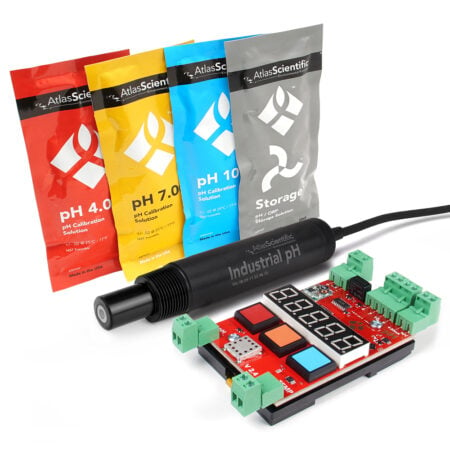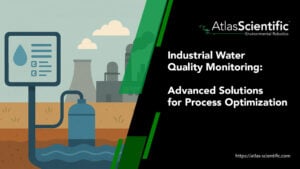

Everything You Need To Know About Sensor Housing
Sensors play a crucial role in collecting critical data in the world of scientific measurement and industrial monitoring systems. However, a sensor’s reliability and lifespan
# Type at least 1 character to search # Hit enter to search or ESC to close

No products in the cart.

No products in the cart.
Product Categories

Identifying magnesium deficiency requires observing particular visual symptoms with the naked eye. In older leaves, the tissue between veins loses its green color and turns yellow while the veins themselves retain a green color, which is known as interveinal chlorosis. In severe cases, entire leaves may turn reddish-purple or develop necrotic spots. Stunted plant growth and inward curling of old leaves with marginal scorch are other symptoms.
While the wellness of plants is dependent on many nutrients, there is one in particular that is extremely important – magnesium.
Magnesium plays a critical role in physiological processes such as photosynthesis, enzyme activation, and the transportation of nutrients. If plants do not receive enough magnesium, their productivity will be reduced. In this article, we take you through the common signs that indicate magnesium deficiency and some top tips for restoring the health of your plants.
Located in a plant’s chloroplasts is chlorophyll – the pigment that gives plants the green color. But aside from that, chlorophyll is made up largely of magnesium ions. Through photosynthesis, chlorophyll allows plants to trap sunlight energy and convert it into chemical energy. Without adequate levels of magnesium, plants cannot produce enough chlorophyll to make sugars and oxygen for growth and development.
In addition to playing a role in photosynthesis, magnesium (Mg) has other key roles in a plant’s life:
Cell Division: This leads to proper cell division and new plant tissue formation required for overall growth and development.
Protein Formation: It helps in protein synthesis; these are structural components that make up all living organisms and hence act as building blocks.
Plant Respiration: The respiration process ensures energy stored by plant cells is converted into usable forms for various activities like growth or maintenance.

Phosphate Metabolism: This is vital since phosphates are responsible for energy transfer as well as storage within plant cells.
Nitrogen Metabolism: Causes the breakdown of nitrogen involving amino acids, enzymes, and chlorophyll.
Water Uptake: The mineral participates in balancing water uptake and distribution throughout the entire plant providing hydration and nutrient movement.
Since magnesium is mobile within the plant, symptoms often first appear on lower areas typically towards older leaves before spreading upwards. These signs serve as early indicators allowing you to prevent further complications later on by taking necessary steps.
Interveinal chlorosis
One common symptom is interveinal chlorosis. This is when the leaves turn yellow between the veins while the outside remains green. This occurs due to inadequate chlorophyll synthesis as a result of magnesium deficiency.

Progression of symptoms
In more advanced stages, younger leaves may develop reddish, purple, or brown tints in their interveinal spaces. In such cases, these parts may become necrotic and result in leaf death and early shedding.

Impact on plant growth and yield
Although magnesium deficiency does not directly affect fruit quality, extreme deficiency can cause stunted growth and reduced crop production. Early intervention should be done to avoid long-term damage to the plant productivity.

Understanding and addressing the root causes of magnesium depletion is crucial because several environmental and cultural factors can lower magnesium levels in plants.
Leaching through light, sandy soils: Light, sandy soils drain out magnesium easily particularly where there are high amounts of rain resulting in the deficiency of magnesium in plants.
Soil acidity: Soils with a pH below 5 (slightly acidic) create conditions that limit the solubility and availability of magnesium for plants, causing deficiency.

Soils rich in potassium: When plants have a choice they prefer taking up potassium instead of magnesium hence excessive levels of potassium in soil can interfere with the uptake of magnesium, resulting in magnesium deficiency.
Use of fertilizer accurately: Infrequent or improper fertilization practices may lead to low magnesium content in the soil thereby causing a deficiency.
Using too much potash fertilizer: Potash is an amazing way to support plant growth and enhance crop yield. However, the use of excessive potash-enriched fertilizers like tomato feed or potash makes it possible for plants to take up more potassium than magnesium thereby resulting in a lack of magnesium.

Wet cold atmospheres: Long exposure to cold wetness can prevent absorption and transportation processes occurring inside the plant, resulting in less magnesium being absorbed.
Growing media with high EC levels: Interference with the availability and uptake of magnesium ions occurs due to concentrated (high) electrical conductivity (EC). This is most common in indoor growing soil mediums.
If your plants are suffering from magnesium deficiency, the good news is there are some ways that you can help your plants thrive again!
One common cure for a lack of magnesium is feeding your plant’s leaves with Epsom salt (magnesium sulfate). To form foliar spray dissolve Epsom salts – mix a 2% concentration into some water and apply to the plant leaves every four or five days over a one-week interval. We recommend spraying the plant leaves during the morning hours to allow maximum penetration via the stomates on the leaf surfaces.

Calcium Magnesium Carbonate: In cases where the soil pH is low (acidic), applying dolomitic limestone (calcium magnesium carbonate) can help raise the pH and improve magnesium availability.
Organic Compost: Introducing abundant organic compost into the soil can provide a continuous supply of magnesium and other essential nutrients. Organic compost also enhances soil structure and water retention properties.

Regularly checking for soil acidity while making sure that it falls within the required range of plant growth (6.0-7.0 to suit most crops) will enhance magnesium uptake.
In indoor growing environments, monitoring and maintaining the EC within the recommended range can help prevent excessive salt buildup and improve magnesium availability. The most reliable and easiest way to measure the EC of plants is to use Atlas Scientific’s EC sensor with electrodes that measure the electrical potential/ions within the soil.
Temperature also plays a role in magnesium distribution. Therefore, we always suggest maintaining root zone temperatures between 20-25°C (68-77°F) to promote efficient magnesium uptake and transportation within the plant. To control the temperature, the Atlas Scientific Complete-Temperature Kit is the ultimate solution for accurate temperature monitoring.

We always say that prevention is better than a cure. To prevent magnesium deficiency in the first place, we have some top tips for you!
Firstly, to boost low levels of magnesium in soils, you can add some manure that is well decomposed or a rich organic compost each year. The yearly addition of nutrients in the soil is a common practice for maintaining magnesium levels in the soil. When adding manure to soil, try not to overdo it – too much manure can cause ammonia buildup which can inhibit the uptake of magnesium and other vital nutrients for plants.
Continuing from fertilizer use, we suggest when applying fertilizer on plants to use a complete fertilizer with added magnesium.
Another good practice in the farming world to boost magnesium levels for plants is to practice crop rotation. Practicing crop rotation helps greatly to avoid nutrient depletion and sustain healthy soils, keeping your plants happy and healthy!

Finally, don’t forget to be on top of soil testing. By doing soil tests regularly you will make informed decisions about amending or fertilizing nutritionally disadvantaged soils.
To provide your plants with effective management of magnesium levels, we suggest you get yourself the following reliable tools and tips for monitoring:

It is crucial to the overall health and productivity of plants that their magnesium levels be kept at the right level. Noticing the signs of magnesium deficiency, how to treat magnesium deficiency, and how to prevent it from occurring in the first place, not only will make you a better grower, but your plants will thank you later!

If you would like to know more information on how to effectively manage your magnesium levels so that you maintain optimal plant health for good yields or what measuring tools we have to help your plant monitoring needs, do not hesitate to contact the world-class team at Atlas Scientific today!






Sensors play a crucial role in collecting critical data in the world of scientific measurement and industrial monitoring systems. However, a sensor’s reliability and lifespan

Advanced industrial water quality monitoring is critical for process optimization, regulatory compliance, and equipment protection, providing real-time insights, multi-parameter tracking, and system integration that save
Notifications